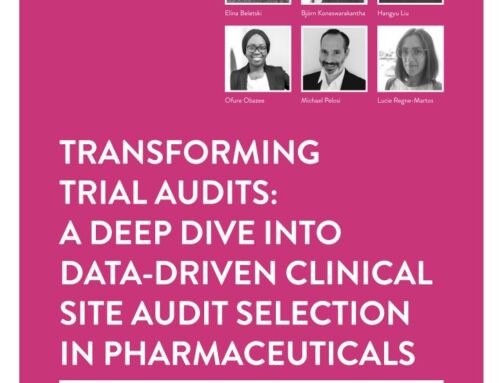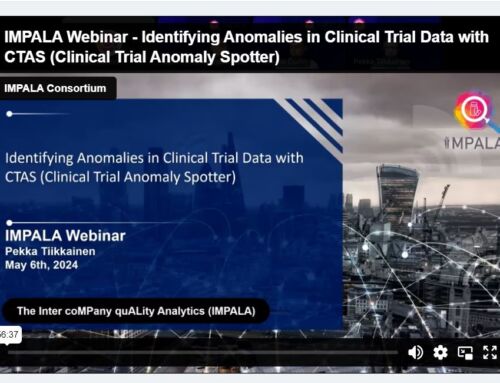In the IMPALA Clinical Safety Reporting workstream, we want to promote the use of advanced analytics to detect quality risk in clinical trials related to safety reporting. Pivotal to all clinical trials is the reporting of adverse events (AE.) Information about AEs is collected from the patients by the clinical trial site who report them to the sponsor. The sponsor then updates the safety profile of the drug that is being investigated. Ensuring that all adverse events are reported from the investigator site to the sponsor is an important aspect of any GCP quality management system. The statistical probability of a site under-reporting adverse events can be used to manage, target and focus quality assurance activities.
We have developed an open-source R (statistical analysis software) package called {simaerep} that calculates the probability of under-reporting of adverse events for all clinical trial sites in a given study using only patient-level AE and visits data. {simaerep} is available publicly on github (https://openpharma.github.io/simaerep/). It follows general good practices and standards for R packages, has a high unit test coverage which is tested by an automated pipeline which creates a validation report that is attached to the latest release.
Several of our members have already tested {simaerep} and below are the member testimonials:
Roche:
“Adverse Event under-reporting probability as calculated by {simaerep} is a corner stone of our safety reporting quality assurance strategy. We run it weekly for all clinical trial sites in our portfolio and display the results along other relevant safety reporting in an operationalised dashboard to our quality professionals. Using {simaerep} we can consistently flag sites relevant sites with the lowest AE reporting rates.”
Merck:
“Using the open source simaerep package developed by Roche, Merck is able to more easily and rapidly test the effectiveness of the algorithm in detection of Adverse events outliers within clinical trials. Our intent in the future is to integrate this algorithm into our audit site risk selection process for clinical studies.”
Boehringer Ingelheim:
“Following the experience that Roche and Merck have made with {simaerep}, Boehringer Ingelheim has been keen to investigate this innovative digital technology. We are exploring whether AE under-reporting data can enhance quality assurance and management of our clinical trials. This could enable earlier decision making to maximize clinical data quality helping us to accelerate the development of new medicines to transform the lives of patients.”
At IMPALA we want to set new standards for advanced analytical methods for quality assurance and promote them across the industry. Using open source publishing, we want to increase the transparency of our work and call for collaboration to suggest and implement improvements.
Please see the following video on calculating the AE under-reporting probability:




